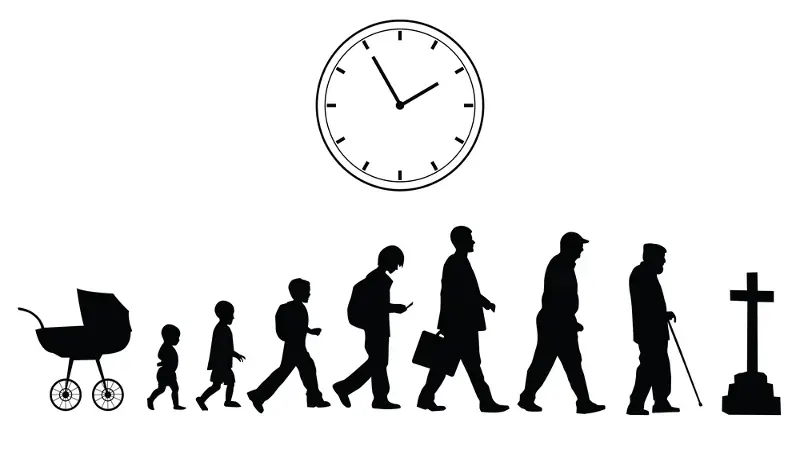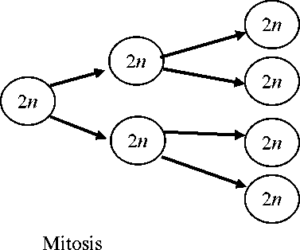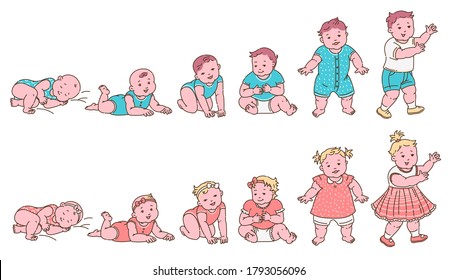Growth and Development, also known as Developmental Psychology is a branch of Psychology that studies age dynamics of the human psyche. It includes child Psychology, teenage psychology, adult psychology, and old age psychology.

Table of Contents
Developmental Psychology
2.1 DEFINITION OF GROWTH AND DEVELOPMENT
Growth is the progressive increase in the size of a child or parts of a child. Growth refers to quantitative changes in an organism. This usually involves permanent increase in size and structure of organisms. These quantitative changes are both physical and mental. These include physical changes in height, weight, girth, internal organs and mental changes in memory, reasoning, perception and creative imagination.
All these changes make the child to be physically grown and mentally responsive. The quantitative changes in height, weight, girth etc. are as a result of multiple cell divisions called MITOSIS (Mitotic Cell Division).
This usually involves body cells called Somatic Cells (Vegetative cells). Somatic cells always have 23 pairs of Chromosome (i.e. 46) called the Diploid number (2n).
In the process of Mitosis, one cell divides into two, then into four, eight etc. Each daughter cell is always similar in every way to the parent cell and they always have the Diploid number (2n) of Chromosomes.

n = 23 Chromosomes
MATURATION
Maturation is the process of gradual unfolding of the inborn potentialities of traits present in the individual because of hereditary endowment. Maturation is the net totality of the effects going on in a self-limited life-cycle. This implies that maturation is the process which takes place according to the individual differences.
Maturation goes along with physical growth and the development of the central nervous system. Time and experience are also inevitable. Maturation is a function of two major factors, which are in turn dependent on time and experience that is:
(i) Phylogenetic Functions
These are functions, which are common to all members of a species. These include crawling, creeping, sitting, walking, etc.
Experience is not necessary to these functions as they are time, age and physical and mental maturity dependent.
(ii) Ontogenetic Functions
These depend on experience. They are functions common to individuals. Some of these functions are swimming, climbing, painting, speech, etc. Here, without experience or training, development cannot take place.
It should be noted that no hereditary tendency can mature fully without environmental support i.e. environment influences development.
DEVELOPMENT
Development is progressive acquisition of various skills (abilities) such as head support, speaking, learning, expressing the feelings and relating with other people. Growth and development go together but at different rates.
Child development can be divided into a number of different aspects, for instance:
· Physical development: this deals with the changes in the body
· Personal development: this precisely deals with the changes in the way an individual’s personality is made up.
· Social development: this refers to changes in which an individual interacts with others in society.
· Cognitive development: this refers to higher mental processes such as thinking, remembering, perception, reasoning, etc.
· Moral development: this refers to changes of an individual in relation to what society expects of him or her.
THE RELATIONSHIP BETWEEN GROWTH AND DEVELOPMENT
After going through the meaning and concept of growth and development as well as the different theories of development, now we are going to identify the relationship between the two, which are as follows:
The term growth is used in purely physical sense. It generally refers to an increase in size, length, height and weight. Changes in the quantitative aspects come into the domain of growth. Development implies overall changes in shape, form or structure resulting in improved working or functioning. It indicates the changes in the quality or character rather than in quantitative aspects.
Growth is one of the parts of developmental process. In a strict sense, development in its quantitative aspect is termed growth. Development is a wider and more comprehensive term. It refers to overall changes in the individual.
Growth describes the changes which take place in particular aspects of the body and the behaviour of an organism. Development describes the changes in the organism as a whole and does not list the changes in parts.
Growth does not continue throughout life. It stops when maturity has been attained. Development is a continuous process. It goes from womb to tomb. It does not end with the attainment of maturity, the changes however small they may be, continue throughout the life span of an individual.

